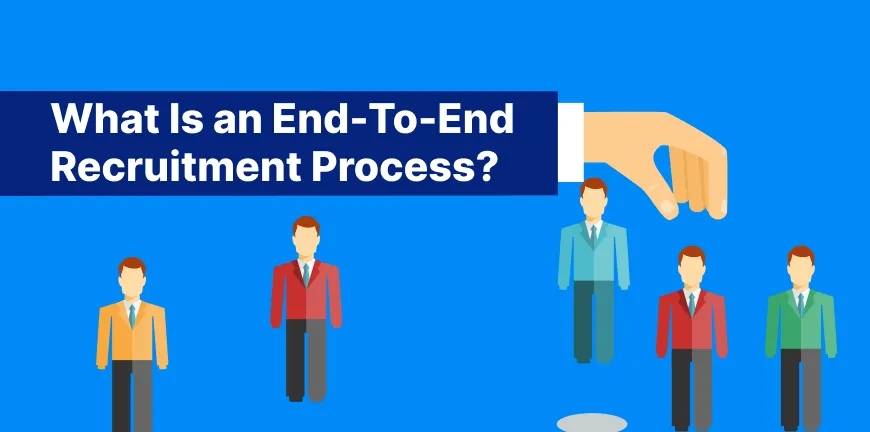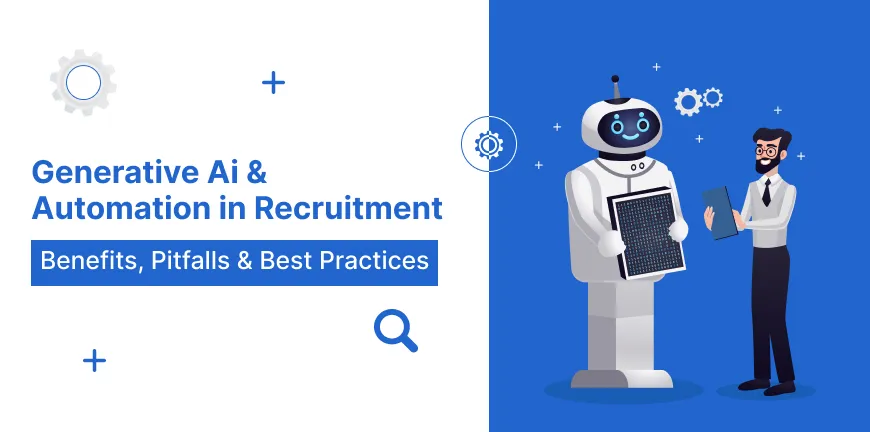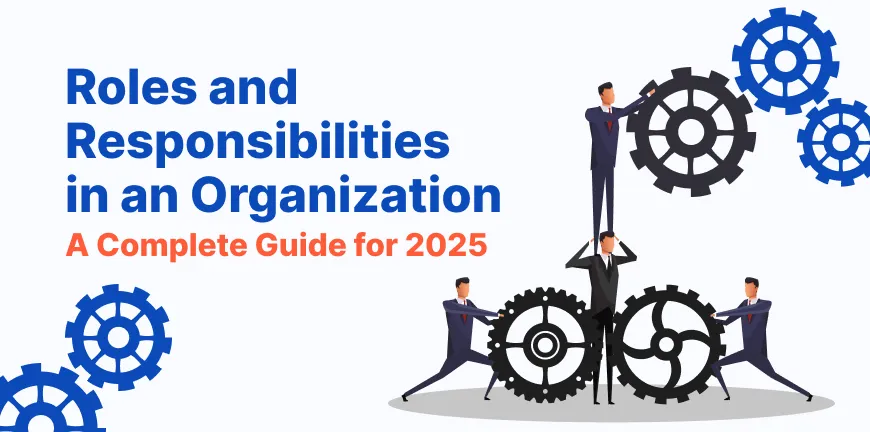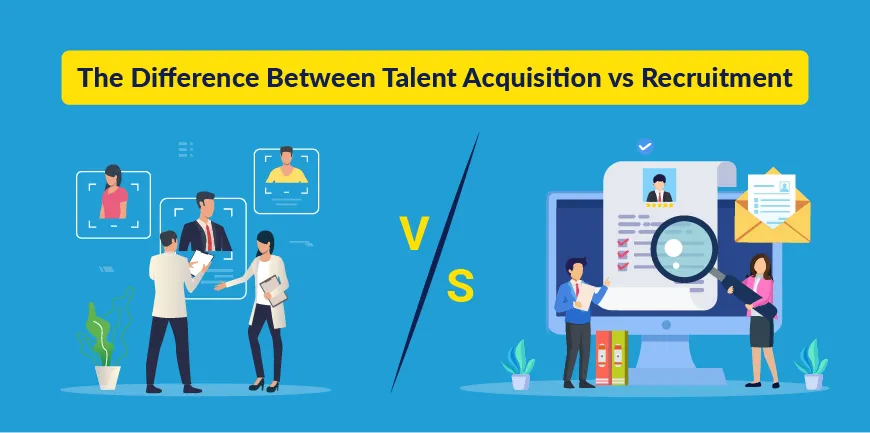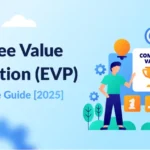
Employee Value Proposition (EVP): All You Need to Know in 2026
27/10/2025
What is RPO in Recruitment?
28/10/2025- What is an end-to-end recruitment process?
- What are the Key Stages of an End-to-End Recruitment Process?
- What are the Benefits of an End-to-End Recruitment Process?
- What are the Challenges in Managing End-to-End Recruitment?
- How Technology Improves the End-to-End Recruitment Process?
- What are the Best Practices for Effective End-to-End Recruitment?
- What are the Future Trends in the End-to-End recruitment process?
- FAQs- Frequently Asked Questions
End-to-end recruitment services! It is something almost every service provider claims they offer. But what are these services? End-to-end recruitment is when a company takes responsibility for the full recruitment life cycle, right from sourcing a candidate to onboarding them. Usually, recruiters who carry out the end-to-end recruitment process collaborate extensively with the hiring team or the HR of the client organization.
What is an end-to-end recruitment process?
An End-to-end recruitment process is one where every stage of the recruitment process is thoroughly managed. It encompasses everything from finding a candidate to hiring and onboarding them successfully to fill a crucial role in an organization. It’s a journey that an expert recruiter undertakes when trying to determine the exact workforce requirements of an organization and ends when every stage is fulfilled, resulting in the right individual being onboarded.
What are the Key Stages of an End-to-End Recruitment Process?
1. Workforce planning
What is the job role you are hiring for? Is this a crucial role that needs a lot of commitment, or do you just need someone who can help during peak seasons? Must they have prior experience? Once you have answers to these, you can move on to the JD part.
2. Crafting a compelling Job Description
A job description is the first impression a potential candidate gets of your company. So, creating an attractive Job description is a must. The JD must reflect the role requirements in a way that attracts a potential candidate. Of course, do mention their roles and responsibilities and all other important details, but also mention what benefits they’ll be getting out of the job.
3. Talent sourcing
Once all of this content is drafted and ready to go, and both the recruiter and the hiring manager are happy with the job description, the search commences. This is done through the use of proper sourcing channels, including online job portals, social media, employee referrals, and professional networks, to source individuals who meet the requirements.
4. Screening and shortlisting
Upon receiving applications, the end-to-end recruiter begins screening them by matching the resumes with the role’s requirements and shortlists the candidates. Following this, initial interviews are conducted, and skill assessments are given further to shortlist the most suitable candidates for the role.
5. Interviewing and selection
Candidates who perform well in the assessments and initial interviews are scheduled for one-on-one interviews with hiring managers, where the final candidate is selected who is not only the best fit for the role but also a good cultural fit.
6. Extending job offers and negotiation of salaries
Job offers are extended to the candidates who pass the final interview. As part of our comprehensive end-to-end recruitment services, we support our clients throughout the negotiation of offers and the signing of contracts with candidates.
7. Onboarding
Newly hired candidates must complete paperwork related to the onboarding process. After completing the same, they will be given a brief about the organization, its processes, culture, and operations.
What are the Benefits of an End-to-End Recruitment Process?
An end-to-end recruitment process offers numerous benefits. Some of the key advantages of the process include-
1. Streamlined and efficient recruitment
It is such a detailed process that there is no room for errors here. Every stage is executed smoothly. From finding the right candidates to screening them and conducting interviews, the end-to-end recruitment process ensures that there are no cracks in the process.
2. Enhanced candidate experience
The process is so well executed that candidates who are part of it have an extremely satisfactory recruitment experience. At every step, they are made aware of what they can expect, communicated with through personalized messages, and are made to feel at ease throughout the process. This increases the chances of offer acceptance.
3. Higher quality hires
This process is well-thought out and the entire process is diligently overseen by an expert external recruiter. Each step of the process is carried out perfectly. This ensures candidates of the highest quality. This also makes sure there are fewer bad hires.
4. Reduced Costs
A fast, well-thought-out, and well-executed process naturally will cost a lot less than a chaotic, unstructured recruitment process. It also has much lower turnover rates.
5. Better communication and collaboration
If a recruitment process must be good, then everyone who is responsible for the candidate who is going to be hired must be involved in it and must know how the process is coming along. And this is what the end-to-end recruitment process does. Having everyone on the same page ensures there are no disagreements and results in the selection of the best candidate.
6. Data-driven improvements
A good recruitment process can reveal what exactly is working and what’s not in the system. The detailing of the process and the data makes it easier to figure out where it needs to be modified to ensure effectiveness at all stages of the recruitment process.
What are the Challenges in Managing End-to-End Recruitment?
- Job descriptions must be clear, easy, quirky, light, but interesting to read. Vague descriptions create false expectations, leaving candidates unhappy.
- Not focusing on internal talent mobility and promoting from within can result in missing out on good talent, which could have also saved money, time, and reduced risks.
- Resumes shouldn’t be the only deciding factor. They help, but don’t show the whole picture. It often results in great candidates with non-traditional backgrounds being overlooked.
- Standard questions like “What’s your greatest weakness?” only get rehearsed answers instead of real insights. Companies that rush through interviews pay the price. SHRM reports that bad hires cost companies 30% of that employee’s first year’s pay.
- Hidden bias remains a big challenge. Studies show men get 50% more callbacks than women in male-dominated jobs. This bias occurs when companies hire based on cultural “fit” rather than shared values. This has become a bigger issue in today’s remote-first environment.
- Don’t write off over-qualified candidates, thinking they’ll leave soon. They might just want stability or meaningful work after changing careers. Give them a fair chance.
- Budget-friendly pay, poor candidate communication, complex applications, and skipping reference checks can all hurt your hiring success.
- A solid onboarding process matters most after making an offer. New hires struggle within weeks without proper guidance. Harvard Business Review points out that poor culture fits lead to turnover costs of 50-60% of a person’s yearly salary.
How Technology Improves the End-to-End Recruitment Process?
HR teams rely on technology to streamline operations and enhance results. The market now has many tools that automate routine tasks.
- Applicant Tracking Systems (ATS) can store candidate details and track applications. These systems help hiring managers manage job applications.
- Job boards are the foundation of connecting businesses with applicants and screening candidates based on resumes. The process is refined through programmatic advertising, which sets rules to enable qualified candidates to apply.
- AI is not just crucial but is also the most efficient tool used in recruitment. Why? Because there is no room for bias here while selecting candidates. Candidates receive instant responses from chatbots, making them more comfortable and confident about choosing your company.
- Video interview software helps conduct remote interviews quickly. Assessment tools review candidates’ skills before face-to-face meetings.
What are the Best Practices for Effective End-to-End Recruitment?
1. Use technology the right way
There are so many recruitment technologies today that not just ease the recruitment process but also make it efficient. Some of the tech that you absolutely must use are ATS, video conferencing software, chatbots, and personalized messages.
2. Highlight the brand image
The first and foremost thing a candidate comes across is how your brand is portrayed on different platforms. He/she forms their first impression there. Your brand, along with showing what they stand for, must also include some snippets of how happy employees are working for you. This can be a game-changer.
3. Keep candidates informed about the process
It doesn’t take much to inform candidates about how the process is going. As an organization that is recruiting, it is your responsibility to make sure the candidate knows exactly what to expect next in the process.
4. Prioritize Diversity and Inclusion
In the future, if you don’t incorporate diverse and inclusive recruitment practices, chances are you will be losing out on some of the most skilled candidates. Don’t stick to the traditional, and make sure you give a chance to people from different backgrounds and distinct experiences. You will be surprised to see the surge in growth.
5. Build a Talent Pipeline
Don’t wait for an opening to start looking. Keep in touch with promising candidates you’ve met before. A warm talent pipeline means you’ll always be prepared when a new role opens
6. Higher management should know who you are hiring
Ultimately, it should be about hiring the right person. However, even before it starts, every person who would be responsible for the employee during their tenure must know and be involved in the process.
What are the Future Trends in the End-to-End recruitment process?
1. AI integration and Machine Learning for effective hiring
AI integrations empower personalized candidate engagement, automate communication, offer data-driven insights, and predict ideal candidates, all while prioritizing data security and compliance.
2. Recruitment Websites can Attract Potential Candidates
Clear job listings, a good ranking on Google for the website, and a professional-looking website are key factors that attract potential candidates.
3. Remote and hybrid work is here to stay
More and more companies are adopting remote and hybrid work models, and these have become a new standard across many industries.
4. Focus on skill-based hiring
Companies can use tests, real-life tasks, or project-based interviews to assess the skills of candidates.
5. Gig Economy to the Rescue
Companies have been increasingly seeking to hire freelance talent to support their various short-term and long-term projects.
6. Personal branding can attract potential candidates
What attracts a candidate to your brand is how you show it. If you can make sure that your brand is so attractive and it tells candidates everything they want to know and are looking for, then you can win in the talent war.
7. Diversity, Equity, and Inclusion must be prioritized.
It’s high time that companies realise that having employees from diverse backgrounds and unique experiences is what they need to ensure innovation and creativity don’t come to a standstill.
8. Pay transparency
It is a move that can narrow the gender pay gap and provide better clarity in the job market, making those potential candidates appreciate your transparency.
FAQs- Frequently Asked Questions
1. What is the meaning of end-to-end recruitment?
End-to-end recruitment refers to the entire recruitment process from start to finish. It includes Planning, role-defining, sourcing, interviewing, decision-making making and onboarding the candidate.
2. Who is responsible for end-to-end recruitment in an organisation?
An organization’s entire recruitment process is a responsibility shared among various individuals and teams. However, the specific people involved are always the hiring manager and the recruitment team.
3. How does technology help in end-to-end recruitment?
Technology enables data-driven decisions, enhances candidate engagement, and reduces time to hire, which is essential for maintaining a competitive edge in talent acquisition.
4. Can end-to-end recruitment be outsourced?
End-to-end recruitment can be outsourced to an expert third-party recruiter, also known as recruitment process outsourcing.
5. What is the difference between end-to-end recruitment and partial hiring?
Unlike partial recruiting, which may only involve sourcing or interviewing, end-to-end recruitment encompasses the entire candidate journey.
6. How long does an end-to-end recruitment process usually take?
The length of the process can range from one week to over 30 days, depending on the company, the complexity of the role, and the number of applicants.

